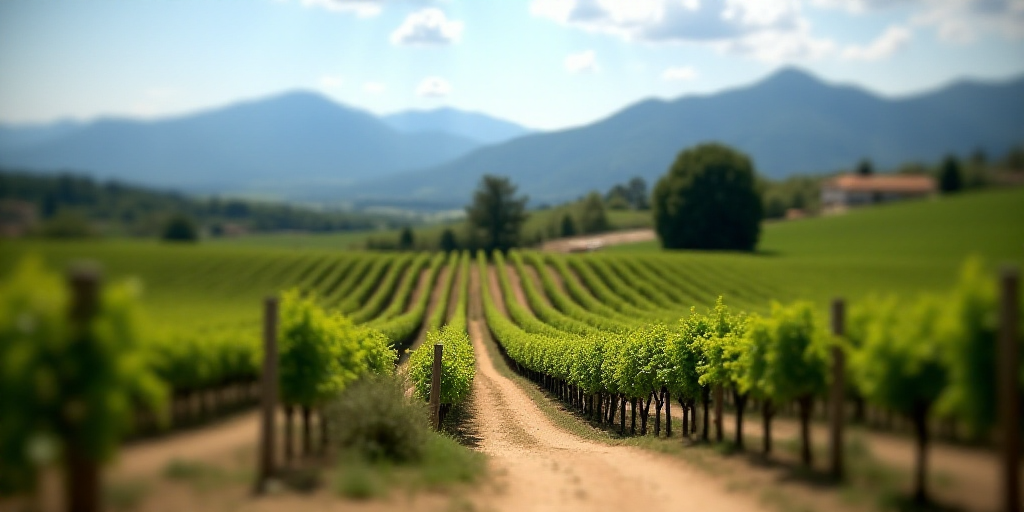Introduction to the Querétaro Viticultural Cluster and Collaboration
Querétaro, Mexico – The Querétaro Viticultural Cluster (CVQ) and the state administration are collaborating on a project to establish an agri-tourism land use for the organization of vineyard zones across the state. This initiative arises due to the lack of classification for vineyards that encompass various activities, including agricultural, transformative, restaurant, and hotel operations.
Key Participants and Government Involvement
Eugenio Parrodi Wiechers, president of the CVQ, explained that this regulation aims to provide a specific land use designation for vineyards with diverse functions. The project involves the Secretariats of Governance and Urban Development and Public Works (Sduop).
“With Sduop, we established and created the first agri-tourism land use. This new designation gives an agri-tourism vocation to areas that previously lacked it. It’s a process that takes some time, but we have complied with all civil protection norms and government requirements. It will take several months for all vineyards to adopt this land use,” Parrodi Wiechers highlighted.
Context and Global Inspiration
Parrodi Wiechers described how this process has unfolded in major wine regions worldwide that also feature gastronomic activities. He mentioned renowned wine regions like Napa, Ribera del Duero, and Mendoza, where agricultural sectors have integrated various activities beyond traditional farming.
“The issue was that there wasn’t a specific category for vineyards, which often have agricultural, transformative, and hospitality vocations. This process is ongoing across different municipalities, but it must pass through various institutions for the sector’s benefit. This model has been successful in major wine regions globally, where gastronomy plays a significant role,” he explained.
Development and Implementation
The agri-tourism land use development, according to Parrodi Wiechers, occurred in collaboration with Sduop throughout the previous year. Currently, they are working on integrating it into municipal plans for approval in the Cabildo (local council).
“Although the Cabildo approval is out of our hands, we are unique in Mexico; no other state has an agri-tourism land use. We work closely with the government to create this example, demonstrating that Querétaro can collaborate effectively to accomplish shared goals,” he expressed.
Expanding Activities Beyond Agriculture
The planned land use will enable vineyards to engage in transformative processes and offer services, accommodating more activities than just agriculture. This is crucial since some vineyards are located in ejidos (communal lands) or agricultural zones.
“More than 50% of the 30 vineyard projects within our cluster are eligible to undergo the accreditation process for this agri-tourism land use,” Parrodi Wiechers pointed out.
“Urban planning often focuses on urban areas, but our vineyards are frequently situated in destinations we’ve created where none previously existed. This land use designation will provide legal and jurisdictional certainty for all activities conducted within a vineyard,” he emphasized.
IGP Recognition for Querétaro Wines
In March, the Mexican Institute of Industrial Property (IMPI) granted the Protected Geographical Indication (IGP) to Querétaro’s wines, specifying that eight out of the region’s 18 municipalities are wine producers.
Key Questions and Answers
- What is the purpose of this new land use designation? The agri-tourism land use aims to provide a specific classification for vineyards that encompass various activities, including agricultural, transformative, restaurant, and hotel operations.
- Who is involved in this project? The Querétaro Viticultural Cluster (CVQ) and the state administration, specifically the Secretariats of Governance and Urban Development and Public Works (Sduop), are collaborating on this initiative.
- Why is this project necessary? There was no specific land use designation for vineyards that integrate diverse activities, leading to the need for a tailored classification.
- How will this impact existing vineyards? This new land use designation will enable vineyards to engage in transformative processes and offer services, accommodating more activities than just agriculture.
- What is the significance of the IGP recognition? The IGP recognition by the IMPI for Querétaro wines highlights the region’s wine production capabilities and supports its growing wine industry.






